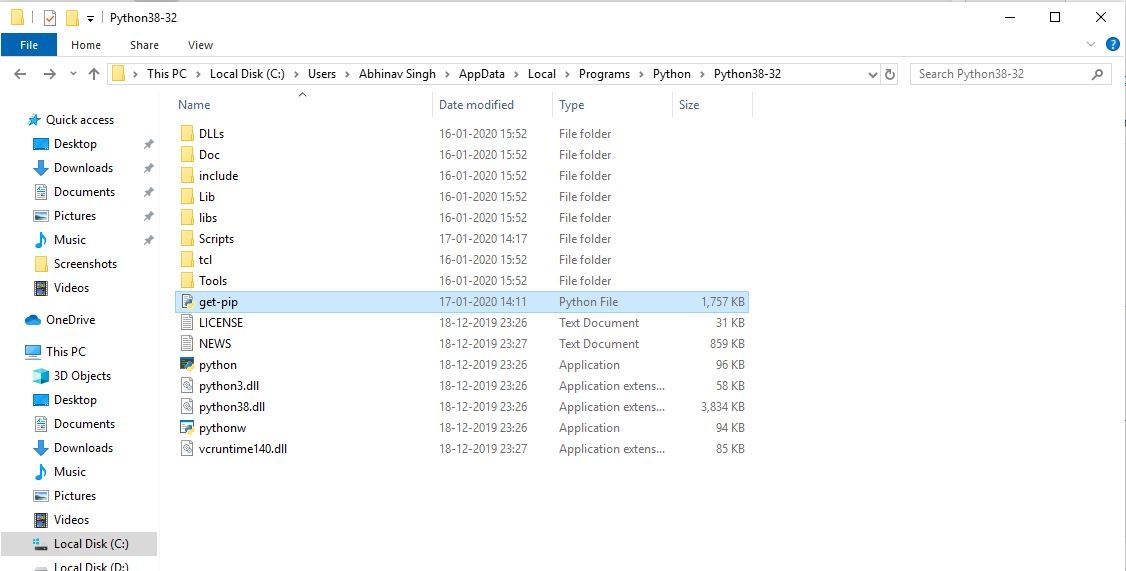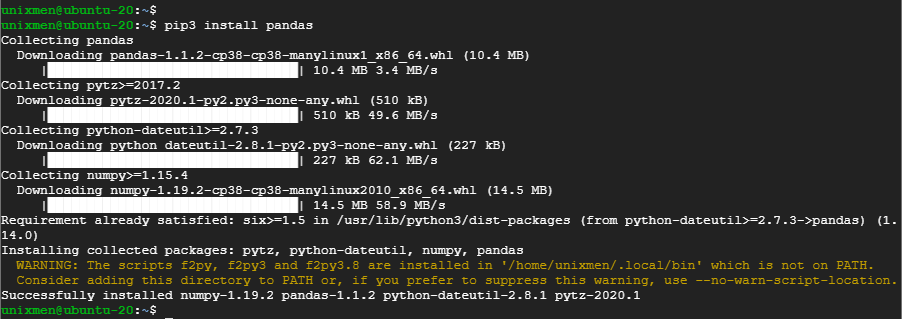

And if you want to get better at Python, you’ll want to install PIP3. Python is a great programming language for beginners, because it’s less intimidating than most of the other languages you’ll eventually have to work your way through. Verify that the resource group was deleted by using Get-AzResourceGroup.A good programming language is hard to find, but if you’re serious about being a programmer or web developer, and you’ve already got your hands on some great web hosting to store all those websites you’ll end up burning through in your early days, it definitely helps to know more than one language. All resources within the resource group will be deleted. Run Remove-AzResourceGroup to delete the resource group. Verify that the resource group was deleted by using az group show. Run az group delete to delete the resource group.
#Install pip3 code#
Save the following code as delete_rg.yml.

Save the following code as create_rg.yml.Īnsible 2.10 with azure.azcollection - hosts: localhost Option 2: Write and run an Ansible playbook Run the following ad-hoc Ansible command to create a resource group: #Ansible 2.9 with azure_rm moduleĪnsible localhost -m azure_rm_resourcegroup -a "name=ansible-test location=eastus"Īnsible localhost -m _rm_resourcegroup -a "name= location=" Option 2: Write and run an Ansible playbook.Option 1: Use an ad-hoc ansible command.If you don't need to do that, you can skip this section.
#Install pip3 how to#
This section shows how to create a test resource group within your new Ansible configuration. You now have a virtual machine with Ansible installed and configured! On the host virtual machine, export the service principal values to configure your Ansible credentials. Option 2: Define Ansible environment variables Replace the placeholders with the service principal values. Insert the following lines into the file. Once you've successfully connected to the host virtual machine, create and open a file named credentials: mkdir ~/.azure For security reasons, credential files should only be used in development environments.įor more information about defining Ansible credentials, see Providing Credentials to Azure Modules. In this section, you create a local credentials file to provide credentials to Ansible. Option 1: Create Ansible credentials file

# Install Ansible az collection for interacting with Azure.Īnsible-galaxy collection install azure.azcollection Run the following commands to configure Ansible on Centos: #!/bin/bash # Install Ansible azure_rm module for interacting with Azure.

#Install pip3 update#
# Update all packages that have available updates. Run the following commands to configure Ansible 2.9 on Centos: #!/bin/bash Install Ansible on the virtual machine Ansible 2.9 with the azure_rm module ssh the with the appropriate value returned in previous commands. Using the SSH command, connect to your virtual machine's public IP address. (Get-AzVM -ResourceGroupName QuickstartAnsible-rg QuickstartAnsible-vm-pwsh | Get-AzPublicIpAddress).IpAddress Az vm show -d -g QuickstartAnsible-rg -n QuickstartAnsible-vm -query publicIps -o tsv


 0 kommentar(er)
0 kommentar(er)
